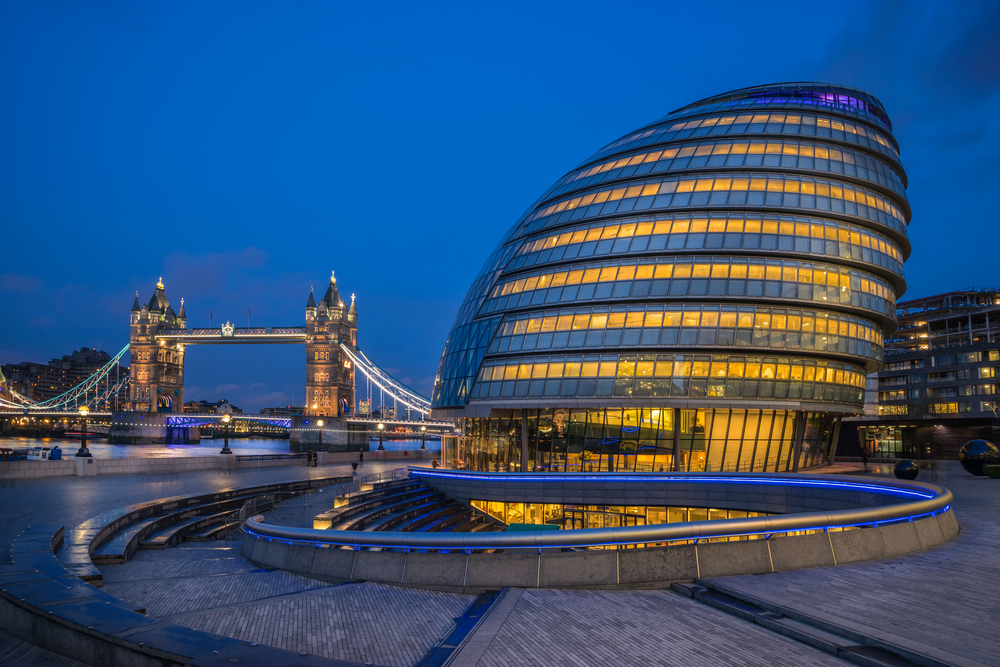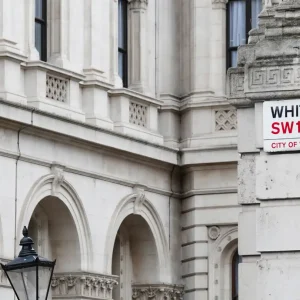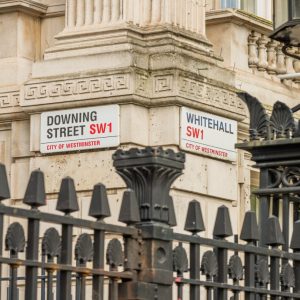
Chief digital officer (CDO) for London Theo Blackwell is keenly focusing on developing the UK capital’s Emerging Technology Charter and a new iteration of the London Datastore which will help create the platform for the city to “join up data – and develop services and innovate off the back of it”.
Blackwell, appointed in 2017, was speaking at Tech Monitor publisher New Statesman Media Group‘s Virtual CIO Symposium.
In a far-reaching conversation, he touched on London’s smart city plans, next-generation transport and the opportunities provided by connected electric autonomous vehicles, as well as the role digital technology can play in helping London meet its Paris Agreement sustainability goals.
Blackwell was previously Cabinet Member for Finance, Technology & Growth at the London Borough of Camden, before taking the newly created chief digital officer post in the Mayor of London’s Office.
Blackwell said that the role – part of London Mayor Sadiq Khan’s 2016 manifesto commitment – had also been lobbied for intensively by councils, the tech sector and wider industry “because they felt they needed a post in London that helped a range of initiatives, from digital transformation through to smart cities, data, and improving London’s digital connectivity”.
Chief digital officer for London: “We take a design-led approach”
London has its unique political challenges. City Hall and the mayor’s office is the strategic authority which sits above 32 boroughs – each representing an average population of a quarter of a million – and sitting alongside city-wide agencies such as Transport for London, with its own impressive innovation record comprising Oyster Cards, the Congestion Charge, the Ultra-Low Emission Zone, and helping popularise contactless payments.
“It’s really important for innovation that we aren’t either just operating top-down from what TfL is doing, or just a collection of expensive Smart City pilots in each borough,” Blackwell said.
“And when we approach innovation, we should not follow the quite ‘solutionist’ smart city model that if a technology works in one place, it could therefore be transplanted everywhere. Instead we should take a more design-led approach, innovation that’s faced towards the citizens, that makes the city better – not our innovation being led by the availability of a technology that’s presented in front of us.”
London Datastore
Along with connectivity, digital skills, borough-wide collaboration and establishing common digital principles, data is the big strategic focus for Blackwell.
He quipped that it had been particularly important to “move away from the idea that a city being good at data is having lots of data sets”.
The London Datastore, created by the Greater London Authority “as a first step towards freeing London’s data”, was launched at the beginning of 2010 and Blackwell said that its next iteration was a priority.
“We’re moving to develop a new data store for London,” he said. “The last one is about five years old, but the concept has been around for ten years.

The latest version was ploughing a slightly different furrow to other smart cities, and rather than operating like “a massive data aggregator where all the data is sucked into one place and we can boast about how much data we have”, Blackwell said it would respect the federated nature of London and its various sovereign data holders, including universities and the private sector.
Instead, more like a library index card of metadata of where the data is held, it would provide a central registry of data in London “for people to pursue data projects in a much more frictionless way than ever before”.
“The main objective here is to make responsible data sharing to support city purposes, such as climate change, easier to do than ever before,” he said.
Emerging Technology Charter
The chief digital officer described some of the work City Hall has been doing with the Digital Catapult – a digital technology innovation centre and agency set up by the coalition government – looking at London’s advanced tech stack over the next 15 years.
As well as the impact of upgraded and future generations of digital infrastructure – comprising both fibre connectivity and 5G – Blackwell also cited the potential of augmented and virtual reality “which will make our city, in a sense, more ‘clickable’ and interactive”, as well as artificial intelligence in smart transport systems to create more efficient and less-polluting traffic flows.
“London has a really exciting potential for the application of this technology, but for that to happen, we kind of need to do two things,” Blackwell said.
“First, we need to ensure that we’re just not a collection of expensive pilots; that if we scale something, it could be scaled in bigger parts of the city and we can learn from that.
“And secondly, we need a framework to develop this with innovators. We started work on an Emerging Tech Charter for London which will draw together the learnings that we have on prototyping technologies with others, whether it’s live facial recognition technology or connected autonomous vehicles, or our work with data.
“But bringing those lessons together in one place so we can express some sort of city values about how we want to develop technology on a basis of design and safeguarding privacy, with purpose.”
Having completed an initial “biggest listening exercise on the role of technology in London” to develop the Smarter London Together Roadmap at the start of his tenure, Blackwell said work had started on a similar engagement as part of London’s future tech stack.
“We’ll talk to the technology community and indeed the public about that over the coming months,” he said.
“It’s all very well for government to issue various guidelines from various departments, but we’re just closer to innovators and closer to people. The way in which that interacts is really, really important, and it’s really important that we bring that all together.”
Featured photo by Gordon Bell/Shutterstock






